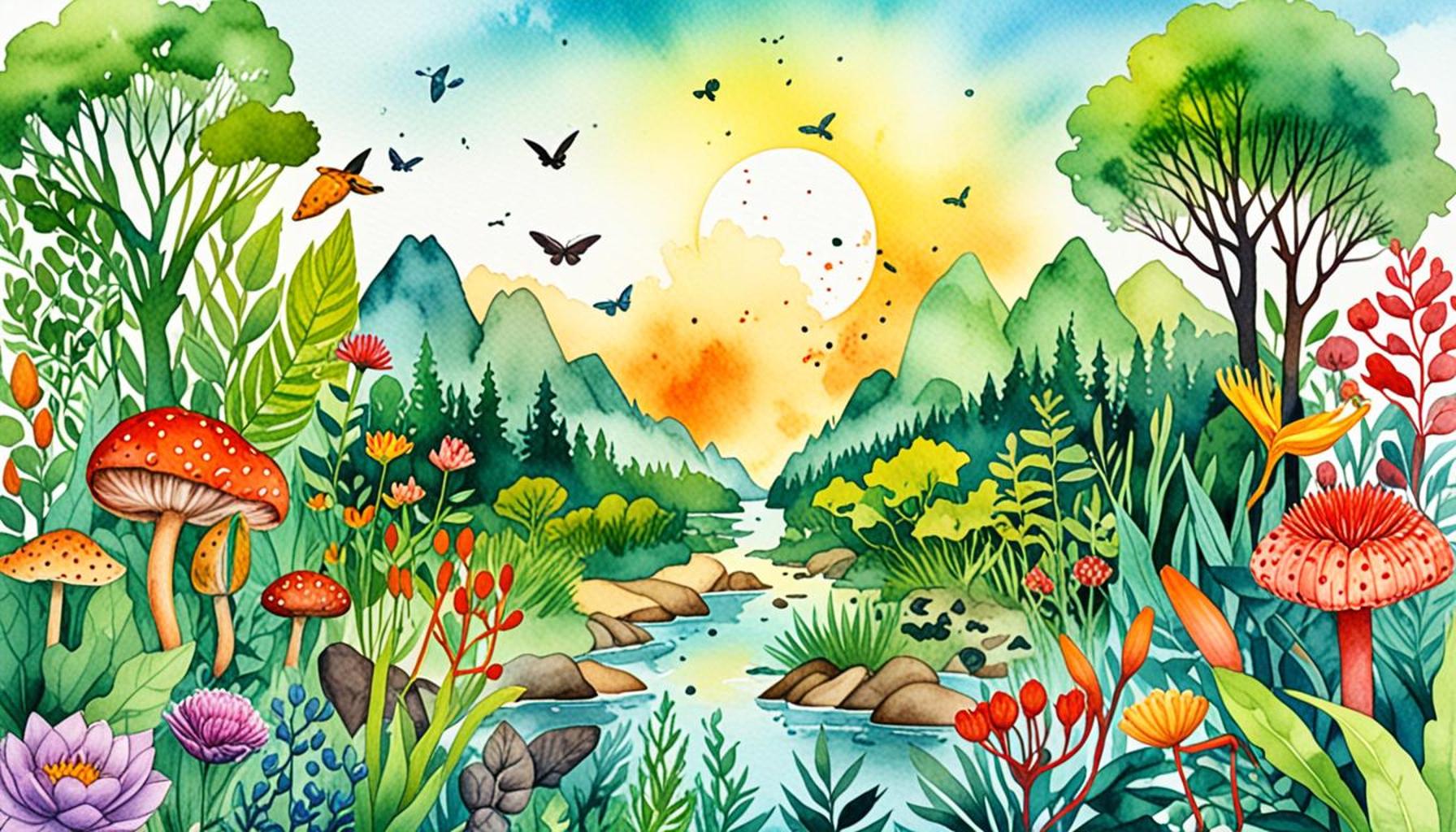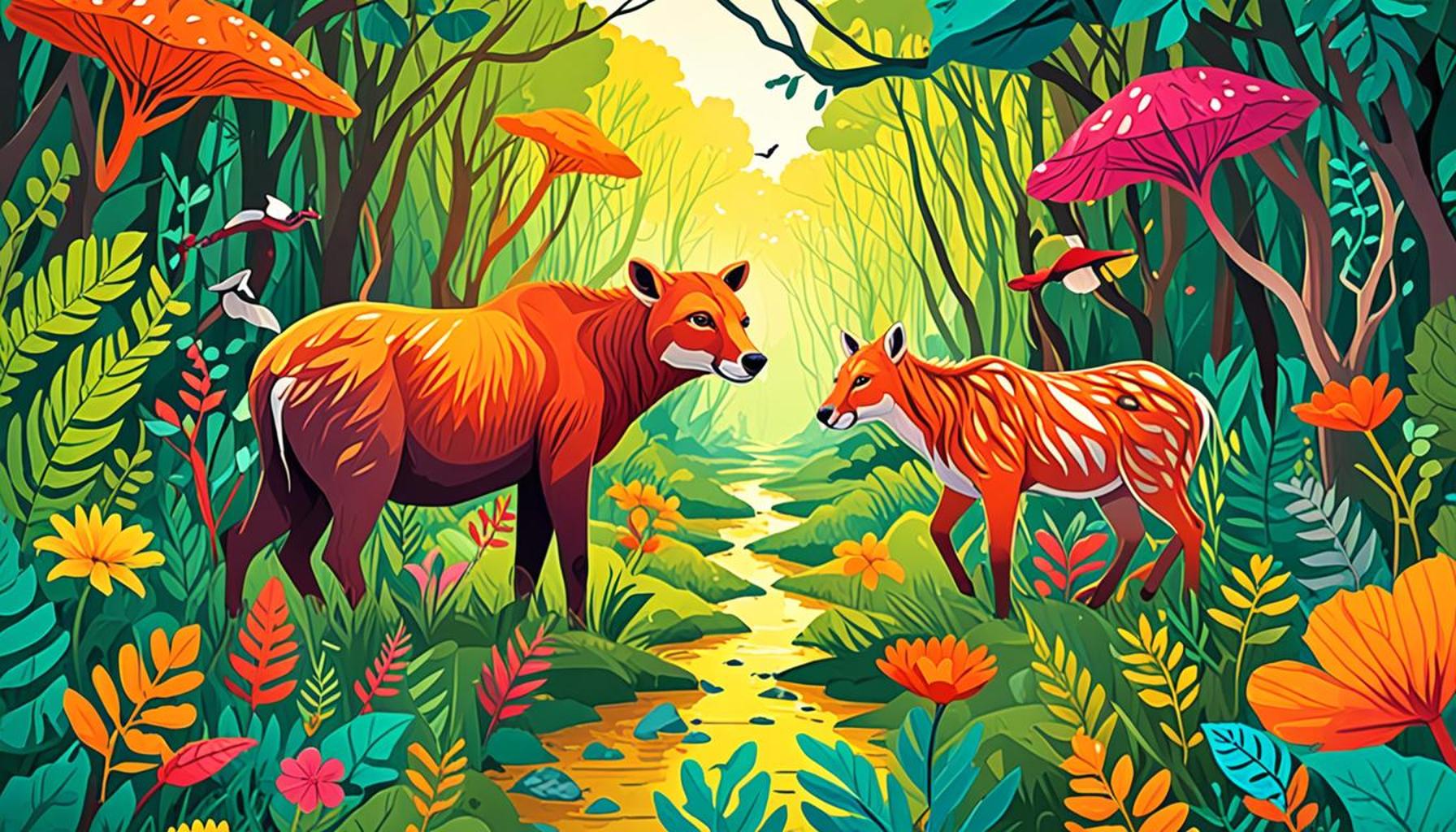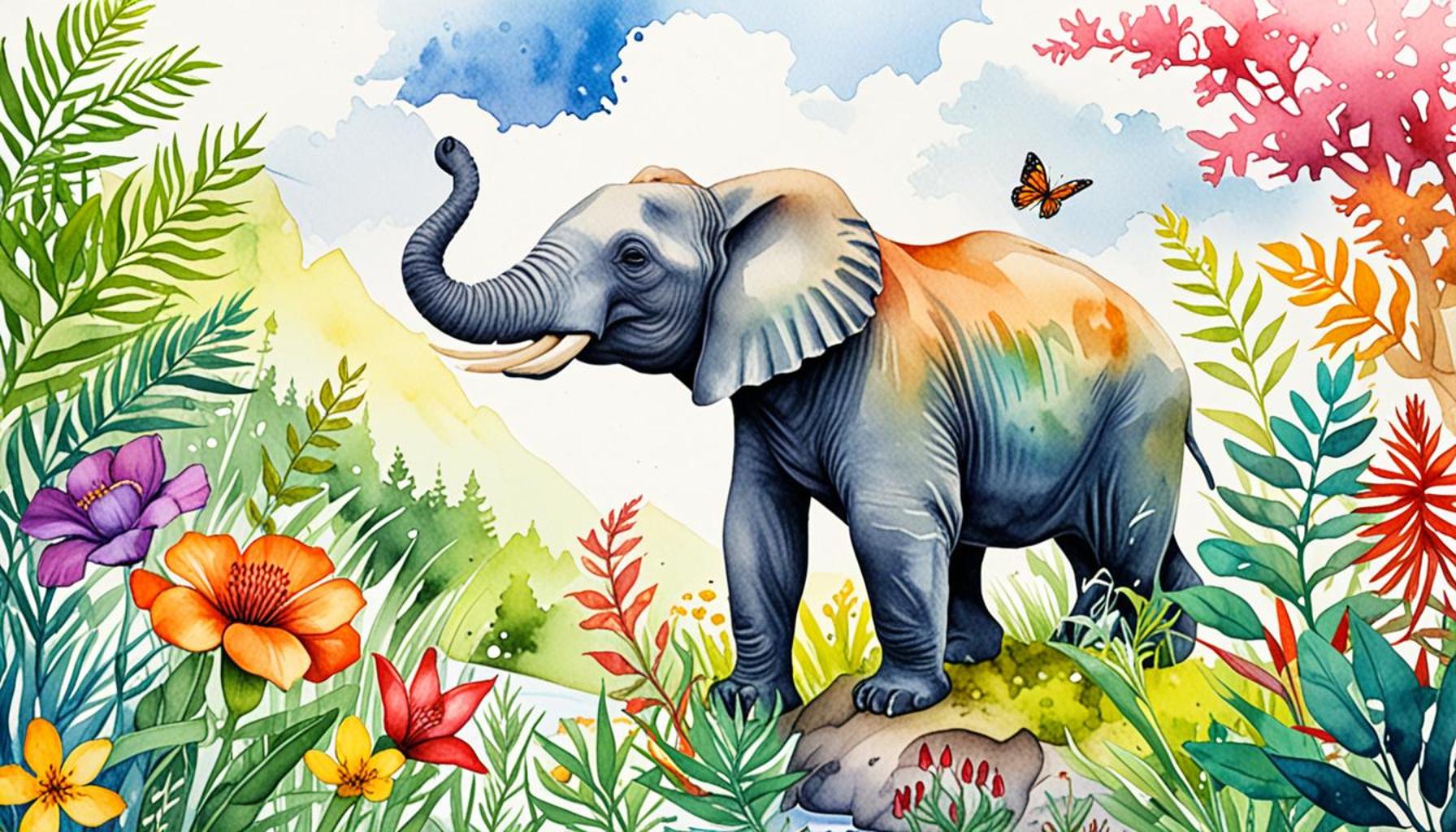Educating Kids on Wildlife Conservation How to Raise Awareness
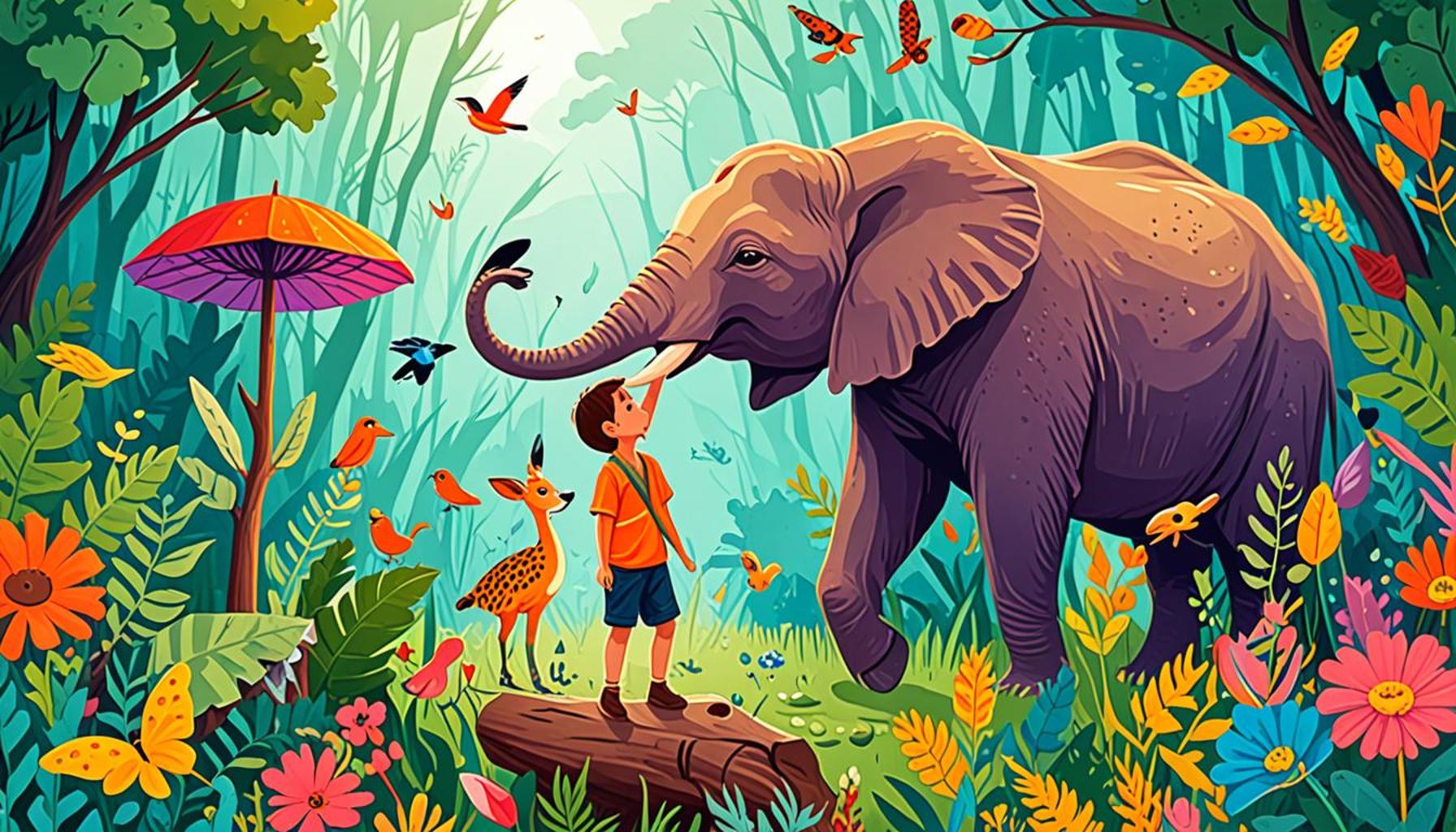
Creating Future Conservationists
In the face of climate change, habitat loss, and pollution, educating young minds on the significance of wildlife conservation has never been more crucial. Today’s children are tomorrow’s decision-makers, and instilling a strong sense of environmental responsibility in them can lead to meaningful and transformative actions that protect the delicate balance of our ecosystems.
The fascination that children have for wildlife can serve as a powerful motivator in conservation efforts. While many kids are drawn to the awe of animals in their natural habitats or through media portrayals, a significant gap exists in their understanding of the real threats these creatures encounter on a daily basis. To effectively raise awareness and encourage proactive behavior, a variety of innovative educational strategies can be put in place:
- Interactive Learning: Hands-on activities, such as guided nature walks in local parks or field trips to wildlife reserves, can immerse children in the beauty of the natural world. For instance, organizations like the National Park Service offer programs specifically designed for youth engagement, providing an exciting way for children to learn about ecosystems firsthand.
- Hands-On Workshops: Creative projects utilizing recycled materials not only nurture artistic expression but also raise awareness about sustainability. Schools can organize workshops where children craft items from repurposed goods, learning the significance of reducing waste while making tangible contributions to their communities.
- Storytelling and Media: Leveraging compelling literature, engaging documentaries, and enlightening films can bring conservation topics to life. For example, reading books like “The Lorax” by Dr. Seuss can ignite discussions about environmental responsibility, while documentaries such as “Our Planet” showcase the beauty and fragility of nature.
Understanding Ecosystem Interconnectedness
One of the vital elements in educating children about wildlife conservation is the promotion of biodiversity. When children grasp the concept of how various species and habitats interconnect, they become more passionate advocates for their preservation. To further this understanding, educational topics could include:
- Habitat Protection: Teaching children about the significance of safeguarding natural habitats can encourage them to advocate for local wildlife areas. Programs that involve planting trees or restoring natural habitats can provide practical experiences in conservation.
- Endangered Species: Educating children about endangered species, such as the California condor or the grey wolf, fosters empathy for creatures in peril. Engaging in campaigns or citizen science projects can empower kids to participate actively in their conservation.
- Sustainable Practices: Instilling simple, actionable habits like recycling, composting, and conserving water helps children understand their role in environmental health. Community initiatives, such as neighborhood clean-up days, can further illustrate how collective action leads to positive outcomes.
By weaving these methods into their educational framework, we cultivate a generation that is not only aware but also motivated to advocate for wildlife conservation. The future health of our planet profoundly depends on the understanding, enthusiasm, and commitment of today’s youth in protecting our precious natural world. Through these efforts, we can inspire impactful change that resonates across communities and generations.
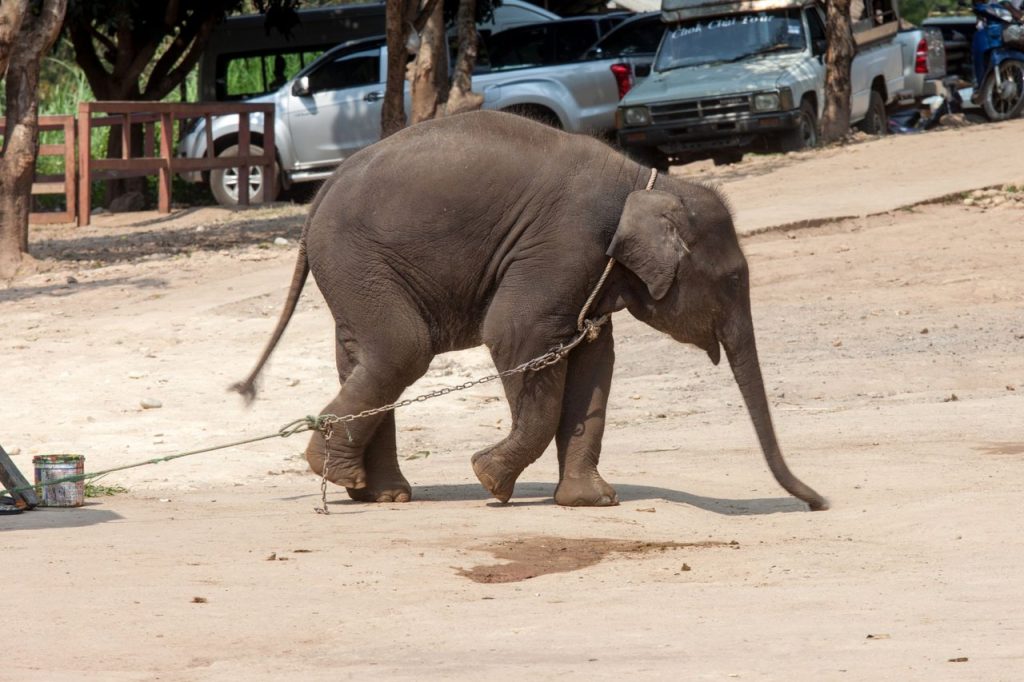
SEE ALSO: Click here to read another article
Engaging Young Minds in Conservation
To foster a generation of conservation-minded children, it is essential to engage them in wildlife education that is not only informative but also captivating. The young ones are naturally curious, and leveraging their innate fascination with animals can lead to a deeper understanding of the intricacies of wildlife conservation. To effectively raise awareness and inspire action, educators and parents can adopt various approaches that resonate with children’s interests and understanding.
One impactful method is the integration of technology and digital media into learning. Children engage with content that is interactive and visually stimulating. Virtual reality programs can transport students into the heart of a rainforest or a coral reef, allowing them to experience biodiversity in immersive ways. Apps designed for tracking and identifying local wildlife can also cultivate interest in observing and respecting their surrounding ecosystems. For example, using an app that maps local bird sightings can turn a simple nature walk into an exciting adventure of discovery.
Moreover, incorporating project-based learning into the curriculum provides an avenue for children to actively engage with conservation topics. By participating in real-life projects, students can understand the importance of their roles in environmental stewardship. Schools can organize initiatives such as:
- Community Gardening: Establishing community gardens encourages children to learn about native plants and their roles in local ecosystems. This hands-on activity promotes biodiversity and demonstrates the direct impact of planting choices on the environment.
- Wildlife Monitoring: Involving students in local wildlife monitoring programs, such as tracking the migration patterns of birds or studying local amphibians, provides scientific exposure. This not only bolsters their observational skills but also reinforces the significance of preserving species.
- Waterway Clean-ups: Organizing clean-up events along local rivers or lakes allows children to witness firsthand the impact of pollution on aquatic ecosystems. This community service fosters teamwork and reinforces the message that individual efforts contribute to greater environmental health.
Furthermore, introducing role models and storytelling can significantly enhance children’s connection to conservation efforts. Regionally relevant speakers, such as wildlife biologists, park rangers, or local conservation advocates, can provide relatable insights and inspire students through their personal journeys in the conservation field. Storytelling can also be an effective tool; sharing tales of environmental heroism, whether from history or contemporary conservationists, can motivate children to see themselves as part of the solution.
Education is the first step toward fostering a sense of responsibility toward nature. By embedding these engaging experiences in wildlife education, we can help children appreciate the beauty of our natural world and understand their critical role in its preservation. This foundation will not only mold them into informed citizens but also empower them to emerge as passionate advocates for wildlife conservation in the years to come.
| Advantage | Details |
|---|---|
| Empowerment Through Knowledge | Teaching kids about wildlife conservation empowers them to feel responsible and capable of making a difference. |
| Enhanced Critical Thinking Skills | Engaging in discussions about wildlife issues helps children develop critical thinking and problem-solving skills. |
| Fostering Empathy for Nature | Understanding wildlife dynamics fosters a deep sense of empathy and concern for biodiversity. |
| Community Engagement Opportunities | Students participate in local conservation projects, leading to increased community involvement. |
Incorporating wildlife conservation education into children’s learning environments not only supports their academic growth but also nurtures a lifelong passion for nature. By introducing lessons on ecosystems, endangered species, and sustainable practices, educators can create curriculum frameworks that promote awareness and inspire action. Children, when equipped with knowledge about the planet’s challenges, can become advocates for environmental stewardship. Simple initiatives, like organizing clean-up drives or wildlife watch events, can ignite their interest and engagement, making them ambassadors for wildlife conservation in their communities. As they grasp the significance of biodiversity and the impact of human actions on ecosystems, they learn to appreciate their role in protecting our planet’s resources.
SEE ALSO: Click here to read another article
Empowering Action Through Hands-On Experiences
In addition to educational initiatives, fostering a sense of empowerment in children can be a transformative component of wildlife conservation training. When children feel capable of making a change, they are more likely to engage actively in conservation efforts. One effective way to instill this sense of agency is through hands-on experiences. These experiences not only educate but also catalyze a path to personal responsibility.
School-based field trips to national parks, wildlife refuges, or aquariums can create unforgettable learning moments. For example, a visit to a local wildlife sanctuary allows kids to observe animals in their natural habitats, learn about animal care, and appreciate the efforts taken to rehabilitate injured wildlife. Such trips can incorporate interactive education where students participate in eco-friendly activities such as helping with animal feeding routines or habitat restoration projects.
Furthermore, creating youth-led conservation clubs in schools or communities can serve as a platform for children to voice their concerns while implementing solutions. These clubs can encourage activities such as:
- Awareness Campaigns: Children can develop presentations and campaigns focused on wildlife conservation that they can share with their peers, families, and communities. This empowers them to take ownership of conservation knowledge and share it in creative ways, whether through art, social media, or public speaking.
- Mentorship Programs: Partnering kids with local conservation organizations or professionals can provide mentorship opportunities, exposing them to the broader conservation conversation. This connection can inspire aspirations for future careers in environmental science, zoology, or conservation politics.
- Seasonal Events: Organizing events like “Wildlife Days” where families can learn more about local species and engage in interactive workshops can create enjoyment around nature while educating attendees about issues like habitat destruction and climate change.
Incorporating environmental art and creativity further enhances children’s appreciation for wildlife. Facilitating art projects related to conservation themes—such as mural paintings depicting local ecosystems or sculptures made from recycled materials—can provide a creative outlet. For instance, students can engage in designing public art displays that emphasize the importance of protecting local endangered species, igniting community discussions around conservation.
The role of social media in today’s digital age cannot be overlooked when it comes to raising awareness. Children, already attuned to digital platforms, can be encouraged to use these tools responsibly to advocate for wildlife conservation. By sharing their conservation efforts, inspiring stories, or conservation-related content on platforms like Instagram, TikTok, or YouTube, kids can amplify their voices, connect with like-minded peers, and foster a global sense of community on wildlife issues. Educational institutions can guide this by implementing discussions on the ethical use and impact of social media in advocacy.
Engaging children in wildlife conservation is not a one-off initiative; it is an ongoing journey that requires sustained effort and creativity. By providing opportunities for hands-on experiences, collaborative projects, and digital engagement, we empower children to become committed advocates for wildlife conservation, equipping them with valuable skills and a lifelong passion for protecting our planet’s wildlife. This ongoing engagement ensures that the message of conservation is woven into the very fabric of their upbringing.
SEE ALSO: Click here to read another article
Conclusion: Fostering a Future of Wildlife Stewards
In the quest for effective wildlife conservation, the focus on educating kids emerges as a vital strategy. By integrating hands-on experiences, interactive projects, and community engagement, we not only enlighten young minds about the importance of protecting biodiversity but also inspire a sense of ownership and responsibility toward the environment. As children connect with nature through field trips, wildlife clubs, and creative arts, they gain a deeper understanding of the delicate balance of ecosystems.
Moreover, harnessing the power of social media offers an innovative avenue for raising awareness on a global scale. Involving children in digital advocacy can exponentially amplify their voices, as they influence their peers and communities through their shared conservation journeys. This modern approach ensures that the message of wildlife preservation resonates within broader societal contexts, adapting to a digital-savvy generation.
Ultimately, the aim is not only to inform but also to empower the next generation of champions for wildlife. As they learn about pressing issues like climate change and habitat loss, they can actively participate in solutions, from local initiatives to global movements. The road to fostering enduring wildlife stewards is indeed a collaborative journey. By investing in education today, we are planting the seeds for a healthier planet tomorrow. It is imperative for parents, educators, and communities to unite, nurturing young conservationists who will advocate for and protect our invaluable wildlife for years to come.

